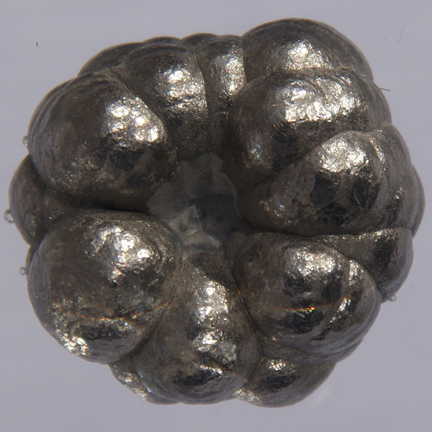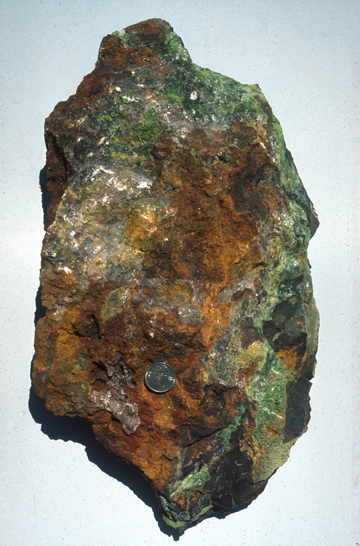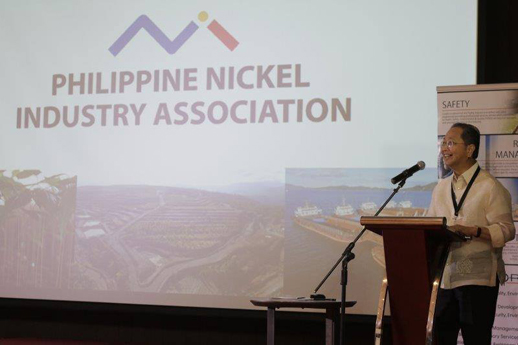The Philippines used to be known for its gold, silver, and copper, but a new element has taken the throne as the country’s top mineral product: nickel.

As the world’s second-biggest supplier of nickel ore, the country exported 577,000 metric tons of it in 2016 and 2017 combined.Last year’s nickel ore exports came in at 230,000 metric tons — a third less than the 2016 figure—but still raked in $455.21 million (P24.533 billion) for the country in 2017, according to the United Nations Comtrade database on international trade.
That dollar figure shows the bright potential of the versatile element for the Philippine economy, perhaps even more than the precious metals mined elsewhere in the country.

In fact, the Philippines was the world’s top nickel producer in decades past, but the shifting local political landscape combined with environmental concerns forced it to lose ground to Indonesia. Our Southeast Asian neighbor has capitalized on our country’s current situation and kicked its production into high gear to feed the mineral-hungry economy of China.It doesn’t mean that local nickel miners aren’t standing their ground, though. Thirty of the country’s 50 mining firms dig for nickel, and seven of them have formed a group — the Philippine Nickel Industry Association (PNIA) — to help champion the sector as well as the broader concept of responsible and sustainable mining that gives back to its partner communities.

Established in 2012, PNIA was organized to promote and develop the nickel mining industry in the country. Given that the mining industry sector is a major backbone of the Philippine economy, the association believes that both the government and the private sector play significant roles as partners in developing this segment of the economy.
PNIA believes the joint efforts of government and the private sector should be continuous and always aimed at revitalizing and developing mining in a manner that balances economic, environmental, and social objectives. The group also firmly advocates for self-regulation and sharing of best practices between and among key stakeholders of the mining industry.
PNIA is committed to inspire, uplift, and promote the best mining practices within the local industry while building recognition of its contribution to local communities and society at large. Its current members include CTP Construction and Mining Corporation, Platinum Group Metals Corporation, DMCI Mining Corporation, Marcventures Mining Development Corporation, Carrascal Nickel Corporation, Citinickel Mines and Development Corporation, and Agata Mining Ventures, Inc.

The vision of PNIA is to position the nickel development industry as a globally competitive and responsible driver of inclusive and sustainable economic growth in the Philippines.
With these ideals in place, the PNIA is committed to inspire, uplift and promote the best mining practices within the local industry, while giving back to the community that entrusted the care of their land to its miners.
“We are partners of the government and other stakeholders for responsible mining. We are providers of opportunities to our fellow Filipinos who want to attain a more prosperous way of life,” the group adds. Still, multiple challenges are on the horizon for Philippine nickel miners. First is that what was once one of the most liberal mining regimes in Southeast Asia is now subject to a government crackdown that shows no sign of relenting. As noted by Amanda Kay in an article for Investingnews.com, “For now, one thing is certain: the direction the Philippines goes with its mining policy moving forward will impact the global nickel market.”
Second is producing the right type of nickel ore that end-users such as Chinese companies will use to produce anything from stainless steel to batteries for electric vehicles. A recent Standard and Poor’s analysis of the global nickel market says most nickel producers started their operations geared toward producing nickel sulfide ores, but when that became scarce, the market gravitated toward laterite ores that were costlier to extract.
Finally, it’s up to local nickel miners to decide what grade of ore to produce that would make the most pro t, given the generally falling prices for the metal in the world market. Mining firms are slowly shifting to shipping medium-grade ores amid declining prices of the usual low-grade nickel ores — 90 percent of which goes to China from the Philippines.
“For the long term, this would mean that some mines might slow down in their production in the coming years depending on the areas being mined.
The shift would have to make adjustments depending on mineralization,” PNIA president Dante Bravo said in a recent forum.
But the association itself remains optimistic for a brighter outlook for nickel in the short term.
“Nickel is basically a consumer good. Nickel consumption is still increasing globally, particularly in China with their booming electronic vehicle industry, as well as increasing public expenditures on construction,” Bravo added.
That only points to one thing—a long reign for the new king of Philippine minerals.
